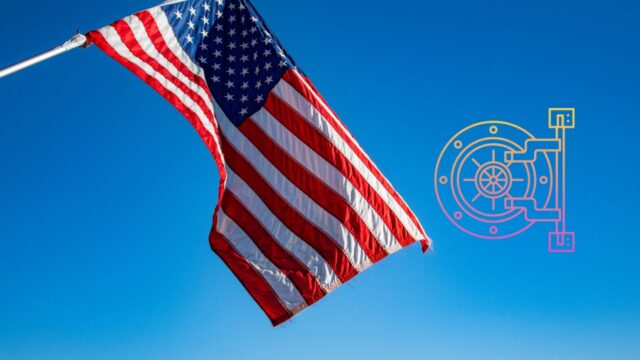
What is the U.S. Treasury
The United States Department of the Treasury is the national treasury of the United States federal government. It was established by an Act of Congress in 1789 to manage government revenue. The Treasury is responsible for producing all of the nation’s currency, and it also plays a critical role in managing the country’s finances. In addition to issuing debt, the Treasury is responsible for collecting taxes, administering benefits programs, and overseeing economic sanctions. The Treasury also manages a number of key financial institutions, including the Federal Reserve System and the United States Mint. The Department of the Treasury is headquartered in Washington, D.C., and its current secretary is Steven Mnuchin.
Who oversees the U.S. Treasury
The U.S. Treasury is overseen by the Secretary of the Treasury, who is a member of the president’s cabinet. The current Secretary of the Treasury is Steven Mnuchin, who was appointed by President Trump in 2017. The primary responsibilities of the Secretary of the Treasury include overseeing the nation’s fiscal policy, managing the government’s debt, and issuing currency. In addition, the Secretary of the Treasury also serves as the chair of the Financial Stability Oversight Council, which is charged with identifying risks to the financial system. With such a broad portfolio of responsibilities, it is clear that the Secretary of the Treasury plays a critical role in ensuring the financial stability of the United States.
What are the main functions of the U.S. Treasury
The United States Department of the Treasury is responsible for a variety of economic, financial, and public policy tasks. They range from issuing debt and managing the federal finances to producing coinage and protecting the president. In times of national crisis, the Treasury also takes on additional responsibilities, such as overseeing the distribution of emergency funds. The Treasury is divided into a number of different divisions, each with its own area of focus. The most important divisions are the Internal Revenue Service, which collects taxes; the Bureau of Engraving and Printing, which produces currency; and the United States Mint, which produces coins. Together, these divisions help to keep the U.S. economy running smoothly.
How does the U.S Treasury work with other government agencies
The United States Treasury is the federal agency responsible for managing the government’s finances, including issuing debt, collecting taxes, and paying bills. The Treasury also manages the country’s currency and coinage, and it is responsible for safeguarding the nation’s financial system from fraud and abuse.
In addition to these core functions, the Treasury also provides support and assistance to other government agencies. For example, the Treasury provides funding for the Social Security Administration and the Department of Veterans Affairs. The Treasury also works with the Department of Homeland Security to protect the nation’s financial infrastructure from terrorist attacks. In short, the Treasury plays a vital role in supporting the work of other government agencies and in ensuring the stability of the American economy.
What are some of the challenges facing the U.S Treasury
The United States Treasury is responsible for a variety of critical tasks, from issuing debt to managing the nation’s finances. In recent years, however, the Treasury has faced a number of significant challenges. One of the most pressing issues is the rising national debt. As the cost of government programs continues to increase, the Treasury must issue more and more debt to finance these expenses. This can put upward pressure on interest rates, making it more expensive for the government to borrow money. Additionally, the Treasury is also responsible for ensuring that tax revenue is collected efficiently and effectively.
However, this task has become increasingly difficult in recent years as taxpayers have become more sophisticated in their ability to avoid paying taxes. As a result, the Treasury has been forced to take on an increasingly complex role in managing the nation’s finances. These challenges have made it clear that the Treasury faces a number of significant challenges in the years ahead.
What is the history of the U.S. Treasury
The history of the U.S. Treasury began with the establishment of the Department of the Treasury in 1789. The department was created to manage the government’s finances and Revenue. Alexander Hamilton, the first secretary of the Treasury, is credited with creating the modern financial system in the United States. Under Hamilton’s leadership, the Treasury assumed responsibility for issuing bonds, printing money, and collecting taxes. In 1846, Congress created the Bureau of Engraving and Printing to make treasury notes and other documents more secure. In 1918, Congress established the Internal Revenue Service to collect taxes more effectively. Today, the Treasury is responsible for managing the government’s fiscal policy and overseeing critical programs like Social Security and Medicare.
What is the future of the U.S. Treasury?
The future of the U.S. Treasury is shrouded in uncertainty. The agency has been underfunded and understaffed for years, and it faces an uphill battle to modernize its systems and stay ahead of increasingly sophisticated financial criminals. In addition, the Treasury is facing pressure from Congress to reduce the national debt, which means that it will need to find ways to generate more revenue. One possible solution is to expand its role in taxation, which could help to raise additional funds for the government. Another possibility is for the agency to focus on issuing bonds, which could help to attract foreign investment and stabilize markets. Whatever the future holds, it is clear that the U.S. Treasury will need to adapt to survive.


































